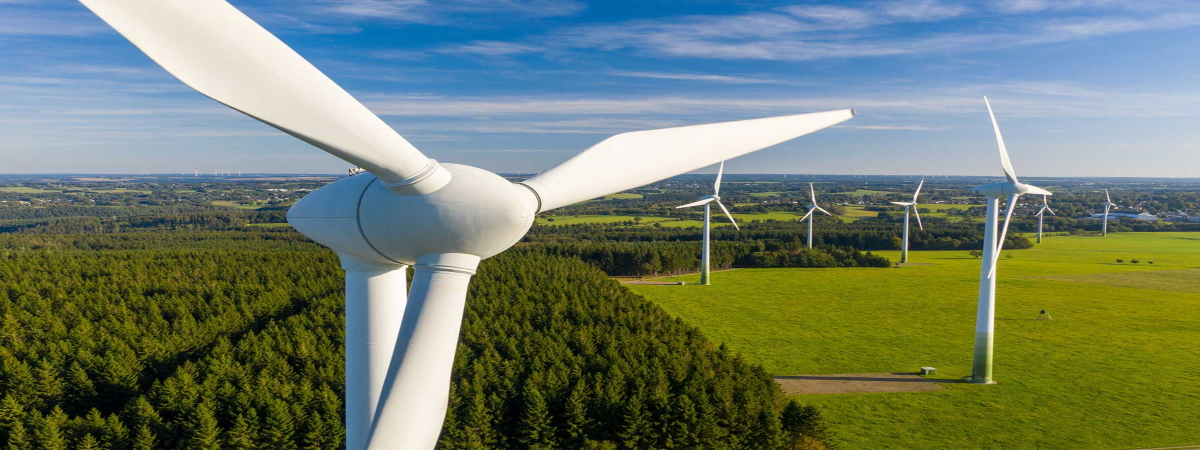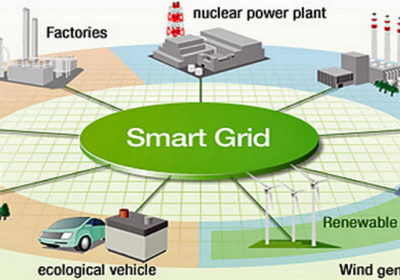
The development of technology to increase the use of renewable energies, mainly solar and wind, has gone hand in hand with a reduction in the cost of their generation, which has substantially increased in many countries that are advocating a change in strategy and diversification of the energy sources they need to sustain the functioning of their societies and infrastructures.
Although there are still technical, environmental and political complications to be able to expand the use of these energies three or four or many more times, the path seems to be marked in a safe and stable way to increase their contribution to the total of what humanity consumes annually, and to reduce those other forms of energy that are the cause of atmospheric pollution and the contamination of our cities, seas, rivers and ecosystems around the globe.
A steady increase in the production of renewables
In practice, developed countries such as China, with an installed capacity of more than 220GW, and with a third of the world’s production capacity, the United States, second in the ranking with a capacity of 96.4GW, as well as other European countries, India or Brazil, and those where the wind is a constant, or where the sun is a blessing practically every day of the year, are seeing that investment in this type of energy production systems in the long term cannot be left aside. Globally, in 2019, investment has increased by 1% percent, to $282.2 billion compared to 2018, showing the need that every year, we further reduce dependence on energies related to oil, coal and those that pollute, and go accelerating the implementation of energies that do not.
Minimal rejection, high social acceptance
Although there is a sector of the population that, for “aesthetic” reasons, does not even want to hear about setting up a wind farm on their mountains or hillsides, not even on their coasts, the reality is that the world must move towards a long-term strategy where the wind and sun are used to the maximum, and their benefits are distributed to cover the energy needs of the entire country where the turbine and solar panel farms are located. At the minimum that small countries, which have it easier to cover less territory with a minimum of wind or solar farms, manage to cover at least 80% of their energy needs with renewable energies in a permanent and sustainable way over time, the effort to move forward to cover 100% will become a reality, and, in a decade or less, there will be countries in the world that have achieved this goal and will be the ones that can set the pace for those who, seeing them as an example, follow their strategies to achieve it.
And we are not too far from it. During 2019, Portugal managed during the month of March to be supplied 103.6% with non-polluting energies (55.5% hydroelectric and 40.2% wind), Norway managed to be supplied almost 100% thanks to hydroelectric, wind, solar and bioenergy. Costa Rica for its part achieved 300 days of energy supply in 2017 with renewable energy as well as the small country of Lesotho, in South Africa, has come to obtain 90% of the energy it consumes from renewables.
The advantage of this process is that public opinion will favor and support much more all electoral programs that include a real and planned transition to renewables at the moment when there are at least one or two countries or regions that manage to be 100% dependent on green energies on a permanent basis, and serve as a model for the others.
It is a question of popularity and approval ratings
Mayors, governors and presidents who want to pass off their energy policies as green policies will tend to look to those who have achieved this and, in order to maintain popularity ratings, to gain an advantage in electoral programs and to avoid being left behind in the public perception of who is doing “something” to help control climate change, they will possibly opt for energy strategies that empower them, thus perhaps giving us the opportunity to see a small spiral of interest in many nations to improve and accelerate the transition to other types of fuels and renewable sources sooner than expected.
If that is achieved, which will be very good news, the world can be happy that, despite the fact that neither the Kyoto Protocol of 1997 nor the Paris agreements of 2015 are bearing any fruit, that neither international meetings such as the last COP25 in Madrid last December 2019 have served to agree on any real measures, at least there are more or less local more or less regional more or less national initiatives that are indeed set with the right mindset to implement, within the limits they can control and manage, new energy supply systems for the population.
Developing viable alternative sources of supply
Experimentation with all kinds of non-polluting alternatives is feasible and has not diminished. Tests are being done to increase and reduce the price of hydrogen as a fuel, with plans to use current international gas distribution pipelines to move it from one point to another, and, although still expensive because of the incipient developments, it is a future process that will also provide us with another alternative to heat homes, to light them and to run our appliances.
In any case, and since our vision of the future is focused on the growth of the two most important and available sources at the moment, wind and sun, it would be really great to see how countries with a huge amount of these resources, for example the whole of North Africa on the one hand, China, the United States, India, Brazil, Portugal, Spain, etc., on the other, embark on the development of wind and solar energy, and how they will be able to use them in the future, on the other, embark on the development of more and better solar and wind energy production systems that can then be connected to a global transport network that can be distributed internationally if there is capacity and demand for it, beyond the borders of the producing countries themselves.
The blockage of the current monopolized oil system
The problem, as always, will be to fight against companies that may see their bottom line decrease if they depend on the world continuing to run on gas or oil, something that, although it is decreasing rapidly, especially because of the fall in demand for crude oil due to the covid-19 crisis, and the sinking of its price below even 0 USD as it has been this week of April (in negative values, sinking more than 300% and closing in negative for the first time in its history), they persist in maintaining their market share and slowing down as much as possible the development of renewable energies that limit and hinder the obtaining of the enormous economic benefits that they now report for the sale of crude oil and gas worldwide.
Let us not forget that a large majority of oil-producing countries, both those within OPEC and those that are not, but with whom they share pricing policies, such as Russia, depend so much on this income that, if the world were to quickly switch to renewable energies, a large part of the world’s current economies would irremediably collapse. Therefore, in spite of the “public” propaganda for the use of green energies here and there, the enormous marketing campaigns of all governments and their state or semi-state companies to appear as sustainable and non-polluting companies, the reality is quite different.
None of these governments wants to give up the enormous income that oil provides, and no government whose GDP depends largely on it is going to promote in their agendas any policy of energy change until they see that they can obtain the same income thanks to the sun or wind, something that is not yet assured, not by far, because the world moves with oil and gas derivatives and that is very difficult to change in the short term.
Let the small ones lead and let public opinion support them
So, as we say, we believe that it has to be small regions or small countries, which do not have commercial interests or large state companies related to the extraction of oil or gas that make the first moves and take the first steps to become 100% green countries permanently, so that, then, by public pressure, by the good image that this provides, the world will begin to see that the world will begin to see that we have a good image and that we have a good image, because the world will begin to see that it is feasible for cities or entire regions to be nourished and benefit from these energy sources, they will have no choice but to start moving quickly towards the development of renewable production systems to avoid being left behind, and see how investors begin to divert their money towards eco-sustainable companies and withdraw it from those that cling to the current polluting model of oil and coal.
It is a good sign, at least it seems so to the public, that large investment funds are showing signs that they will mainly finance, and perhaps continue to do so without publicity, companies that are governed by environmental sustainability criteria, as announced by Larry Fink, president of the American fund BlackRock, or as announced by Christine Lagarde, president of the ECB, in her outline of the investment strategies for the bank during her term of office. We believe that companies in all types of sectors will continue to be financed as has always been the case, and we are always confident that these types of announcements that give “good press” and create a “good image” for those who make them are more marketing than reality, but, even so, as the business and investment world moves towards everything that involves the use of renewables and a reduction in the use of polluting energies, it will be welcome.
The power of change lies in society
In general, it is always public opinion that has the power to force a change of course in this direction, whether at the local or national level, and sometimes perhaps even at the international level. But it usually starts at the bottom and small, without making too much noise, because there are usually more aware communities that manage to implement more sustainable initiatives locally for their immediate future, and then, in the medium term, that can be extrapolated to regions and then, with more or less success, can be extrapolated to the national level. When the population becomes aware and begins to contract services and work with companies that provide them with energy from renewable sources, and sees that they can still watch television, put on the washing machine, turn on the oven and take a shower with the same ease as when they do it with electricity from polluting sources, they will begin to realize that what is holding back the development of these sources is not so much the complexity of their technology or their distribution, but rather the refusal or distrust of the people who use them, but the refusal or suspicion of their own rulers due to the pressure of the macro oil and gas companies to dismantle or cede part of the profits they have from the sale of these resources, since they have not had time to reconvert, or have not wanted to reconvert yet, due to the cost that this entails, and due to the time that would pass before wind or sun give the same profit margin as coal or oil do now.
But everything will come, because, in the end, these types of fuels will eventually run out, and only those regions and places that have already foreseen the change towards a world powered by renewables will have a free hand to continue developing and advancing without the turbulences that may arise when the usual energies are no longer viable, are no longer available, prices (if they recover) are skyrocketing or internal wars between countries for their control cause too many ups and downs and instability in world markets, and so the population ends up moving directly to “calmer” sources, whose production will no longer depend on geopolitical conflicts or companies financing guerrillas to maintain security wherever there are oil wells yet to be exploited and bags to be extracted.
A final aside for nuclear energy
Finally, and although we have not talked about it, nuclear energy, which is a non-polluting source, at least if everything goes well and if there are no accidents such as those known to all in Chernobyl or Fukushima, will only be viable as an alternative energy source at a very high cost, because the world still does not trust this type of reactors, which today provide about 12% of all the energy consumed on the planet, will never again have safety failures or fall victim to a catastrophe that causes much more damage and for much longer than a falling wind turbine or a solar panel that stops working will ever have.
So it is certainly an alternative that many countries are considering and some are ramping up – there are some 450 reactors currently in operation around the globe and there are some 60 more under construction with 2019 data. Saudi Arabia, for example has announced plans as early as last year to install nuclear power plants, just as Abu Dhabi, capital of the United Arab Emirates, has recently acquired four South Korean reactors to increase atomic energy production and slightly decrease dependence on oil. But it is not an alternative accepted by the majority of the population in the medium and long term, and many leaders may not look favorably on approving any type of measure, program or allocating resources within their governments to increase the capacity of existing nuclear power plants or create new ones, especially when the whole world is increasingly aware of the need to care for the environment and when any policy that goes against this can end with any government and any ruler in a matter of days.
Good prospects for the future
Let us hope that the dilemma between maintaining companies that extract polluting resources that are harmful to our society versus maintaining the income that the governments that control these companies need in order to continue operating is resolved soon and satisfactorily, and that investments and technological developments in renewable energies are no longer held back, their use by the population is encouraged, and the percentage of electricity coming from renewable energies is increased, little by little, move away from a model of energy consumption that endangers not only our current welfare, but the welfare of the planet and future generations to come, who will undoubtedly blame us that, at this time when we had the opportunity to act, we are still looking at the bottom line of large companies and not the health, welfare and quality of life of people, society and the ecosystem that we will have to hand over to them as an inheritance.



